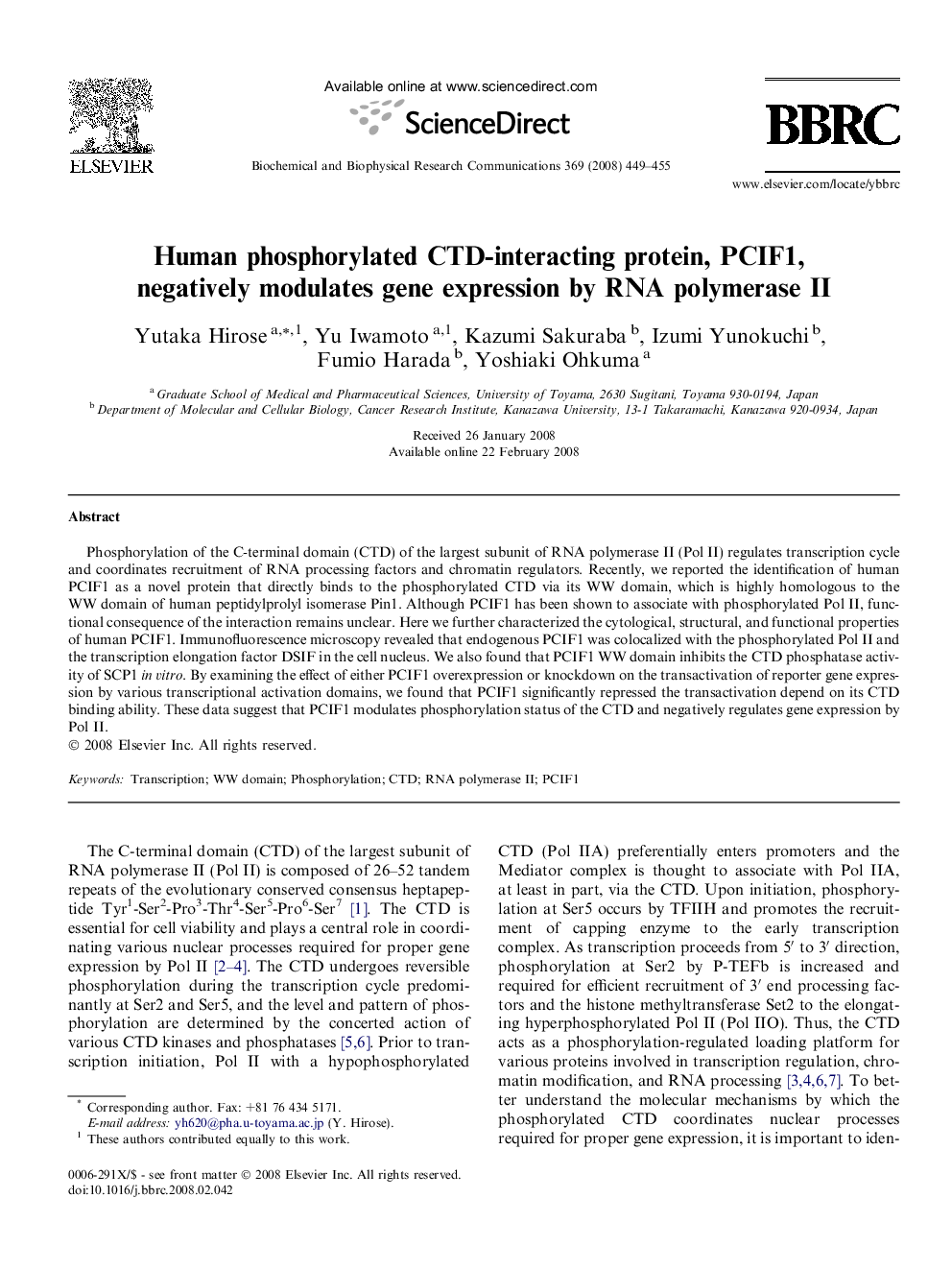| Article ID | Journal | Published Year | Pages | File Type |
|---|---|---|---|---|
| 1935912 | Biochemical and Biophysical Research Communications | 2008 | 7 Pages |
Phosphorylation of the C-terminal domain (CTD) of the largest subunit of RNA polymerase II (Pol II) regulates transcription cycle and coordinates recruitment of RNA processing factors and chromatin regulators. Recently, we reported the identification of human PCIF1 as a novel protein that directly binds to the phosphorylated CTD via its WW domain, which is highly homologous to the WW domain of human peptidylprolyl isomerase Pin1. Although PCIF1 has been shown to associate with phosphorylated Pol II, functional consequence of the interaction remains unclear. Here we further characterized the cytological, structural, and functional properties of human PCIF1. Immunofluorescence microscopy revealed that endogenous PCIF1 was colocalized with the phosphorylated Pol II and the transcription elongation factor DSIF in the cell nucleus. We also found that PCIF1 WW domain inhibits the CTD phosphatase activity of SCP1 in vitro. By examining the effect of either PCIF1 overexpression or knockdown on the transactivation of reporter gene expression by various transcriptional activation domains, we found that PCIF1 significantly repressed the transactivation depend on its CTD binding ability. These data suggest that PCIF1 modulates phosphorylation status of the CTD and negatively regulates gene expression by Pol II.
